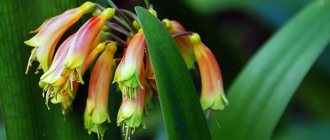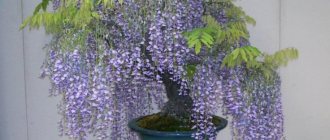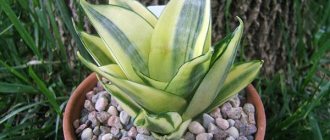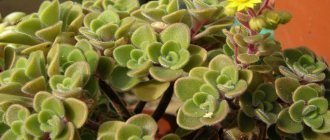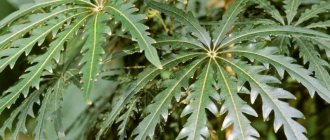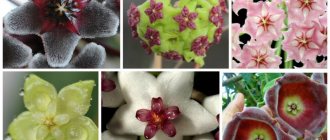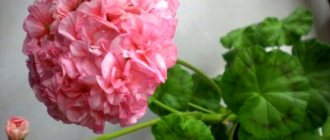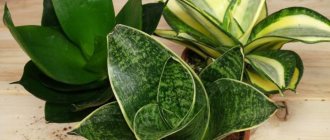Sansevieria three-strip Sensation Bantel
Sansevieria trifasciata is the most common type of sansevieria in indoor floriculture. Due to its unpretentiousness, it is widely used for landscaping office premises and other public places. Such names as Pike Tail, Mother-in-law's Tongue, and in the West it is often called the Snake Plant or Snake Skin for the peculiar color of the leaves are firmly attached to this plant.
This is one of the species of a large genus; other species can be found on the Sansevieria page.
Sansevieria three-lane has up to 6 leaves in a rosette. Mature leaves of the original species are dark green with light transverse stripes. The length of the leaves can reach 30-120 cm, width - 2-10 cm. The leaf is flat, lanceolate, smooth, gradually narrows upward and ends with a spine. The edge of the leaf is green. The color of the leaves is affected by the intensity of light - leaves developing in bright light have bright stripes, in lower light conditions the leaf acquires a uniform dark green color, the stripes become unclear.
Over many years of cultivation, many varieties with different colors, sizes and shapes of leaves were selected from the original species:
- Laurenti (Laurentii) is an old variety that still remains the most widespread and popular; it also became the progenitor of many other cultivars. The leaves grow vertically upward; a clear yellow stripe runs along the edge of the leaf; its width and location may vary slightly.
- Sensation Bantel, or Sensation , is a variety selected by Gustav Bentle in 1948 as a Laurenti sport. Its distinctive feature is the presence of white longitudinal stripes, which alternate with dark green ones. The leaves are straight and stiff, but slightly shorter than those of the wild species. On the leaves, where there are wide green stripes, transverse striations characteristic of the species can be observed. The rarity of this variety is due to its slow growth rate.
- Hanni (Hahnii) is a sport from the Laurenti variety, was discovered and soon patented by S. Khan in 1941. This variety is distinguished by dark green, short, recurved leaves that form a vase-shaped rosette.
- Golden Hahnii was patented in 1953 by S. Khan. The rosette of leaves is similar to the previous variety; its distinctive feature is the presence of irregular longitudinal yellow stripes. It grows quite slowly.
- Hahnii was selected as a sport from the Hanni variety and patented by S. Khan in 1953. The growth form is almost identical to the Hanny variety, but the leaves are silver-gray-green with indistinct transverse stripes and dark edging.
- Hanni Cristata (Hahnii cristata) - a cristate variety, similar in leaf shape to the Hanni variety.
- Futura - similar in appearance to the Laurenti variety, but has wider and shorter leaves, the yellow stripe is usually thinner. This is a fairly new variety, but already very popular.
- Robusta - resembles the Futura variety, but without the yellow stripes along the edge of the leaf. The color of the leaf resembles the wild look.
- Moonshine is a relatively new variety; its leaf shape and growth pattern are similar to the Futura and Robusta varieties, but the leaves are gray-green and silver in color.
- Nelson (Nelsonii) - is a sport from the Laurenti variety, was patented by O. Nelson in 1944. Dark green leaves with a velvety sheen grow straight upward. The leaves are shorter, thicker and more numerous in the rosette than those of the original species. The variety grows slowly and retains its characteristics only when propagated by dividing rhizomes; when propagated by leaf cuttings, it produces plants of the original type.
- Silver Queen - similar in growth pattern to the original species. Young leaves are almost entirely silver-gray with a thin dark edge.
- Compacta - is a descendant of the Laurenti variety and resembles it in appearance, but the leaves are shorter and thinner. The center of the leaf is very dark, and there is also a yellow stripe along the edge. Sometimes some leaves tend to curl, which adds additional decorativeness to the plant. The growth rate is slower than that of the original species. To maintain variety, it is propagated only by dividing rhizomes; when grown from leaf cuttings, plants of the original species are usually formed, sometimes specimens resembling the Nelson variety grow.
- Twisted Sister - forms a low rosette of curled olive green leaves with dark green flecks and a yellow edge.
|
|
|
This is only a small part of the varieties that are currently bred and are already widespread among collectors. Like the Laurenti variety, any of them can serve as the basis for developing new varieties. Despite the wide variety of varieties and species, they all have approximately the same care requirements.
Mother-in-law's tongue in your home: Sansevieria three-lane
A special place among indoor plants in the apartments of beginners and experienced gardeners is occupied by the unusual flower Sansevieria or Sansevieria.
Once purchased, the plant settles in the house forever. Inexperienced indoor plant lovers have no difficulty growing Sansevieria, while veteran gardeners admire the power and beauty of the plant.
In this article we will clearly look at what this amazing plant looks like and also learn how to care for it.
Photo
See photo of the plant below:
There are more than 60 varieties of Sansevieria, differing in color, shape and size. Read about the peculiarities of growing Cylindrical, Golden Honey, Velvet Touch and Moonshine in hotel materials.
Sansevieria trifasciata: botanical description
The most popular species of Sansevieria is Sansevieria trifasciata or three-lane Sansevieria, which belongs to the Asparagus family and has several popular names:
- Mother-in-law's tongue.
- Pike tail.
- Snake skin.
- The tongue of the devil.
- Leopard lily.
All names correspond to the appearance of the flower.
This is a perennial herbaceous succulent with a thick root, up to 2 cm in diameter , growing in the upper layer of the soil. The flower has no stem, and its saber-shaped leaves grow from a rosette-shaped rhizome.
Mother-in-law's tongue is a resident of hot African deserts and semi-deserts, common on the island of Madagascar and in Asian countries. The plant was first brought to Europe by the Italian prince Sanseviero in the 18th century. An amazing flower was named in his honor, which has an unusual ability to take root in any proposed conditions without losing its decorative effect.
Each rosette of Sansevieria three-lane consists of 6-8 dense and hard leaves that grow straight upward and have hard, as if sharpened, edges. The leaf can grow up to 100 cm in length with a width of 8-10 cm. Each leaf tapers upward, forming a sharp “spike” that resembles a nail.
Under comfortable conditions, Sansevieria trifasciata has a dark green leaf color with a bright yellow stripe along the edges.
Check out the photo of this amazing plant.
What does sansevieria look like - portrait
Sansevieria (mother-in-law's tongue): care at home, how to properly transplant into another pot
Sansevieria is a succulent, part of the Agave family, a close relative of dracaena, as well as yucca. In nature, it is found in savannas, as well as subtropical regions of Africa, Asia, and America; among the familiar species, there are about sixty of them, there are epiphytes. The plant is valued in household floriculture, first of all, for its attractive leaves, which are collected in rosettes, and also grow in the vast majority of species directly from the rhizome; certain species have a stem.
The color of the leaves is dark green, in some species they are brown, they have longitudinal as well as transverse stripes, white and yellow. They may have a waxy coating, such as agave or aloe. The shape of the leaves can be wide flat, as well as long, oval and thick, quite wide, flat, or round, and can also be xiphoid, in the form of a pencil or spoon.
In the most common domestic species, the leaves grow vertically upward; there are those in which they are directed in different directions, or grow parallel to the soil. At the tips, the leaves can hold a small point that cannot be separated, this spoils the growth of the plant.
In the interior, sansevieria looks especially advantageous either in the form of a large group of rosettes with long leaves, planted in a small round pot, or in the form of plants consisting of one rosette, planted in a row in a small and long pot. Probably the symmetrical placement of two similar pots. Sansevieria is often used in composition with other house plants.
Sansevieria types with thick leaves that grow in a spiral, particularly robusta, can be shaped to make the plant “flat” in shape. To achieve the result, the leaves of the young plant are fixed with sticks in the desired position and left in this form for a long time, after which the established shape of the sansevieria no longer changes. To ensure that such a plant does not tilt from its vertical position in search of light, it must be turned from time to time.
Home care
The plant's homeland is the African continent with a hot, dry climate and rocky, poor soil , so apartment conditions are ideal for keeping this succulent. Sansevieria three-striped is not capricious and does not need special care, but still, in order for the flower to delight with variegated and dense leaves, some maintenance features should be taken into account.
- The temperature regime for mother-in-law's tongue is not particularly important. The plant feels excellent at high air temperatures and tolerates short-term drops of up to +5 degrees. Sansevieria should not be allowed to come into direct contact with frosty air when ventilating, and the leaves should not be allowed to touch frosty windows.
- Proper watering should be given attention. The plant can go without water for 2-3 weeks, but will begin to use the moisture accumulated in the leaves, which can cause them to lose their elasticity and become soft. To create comfortable conditions for the flower, you should wait until the soil dries out between waterings.
- When replanting for the first time after purchasing a flower, it is better to completely replace the earthen ball with fresh soil, since the old one may be depleted or of poor quality.
- Before planting, you must carefully examine the roots of the flower and remove dead or dried roots.
- Place a thick layer of expanded clay at the bottom of the pot to provide the roots with oxygen.
- Sprinkle the drainage with soil, place the plant in a pot and pour the remaining soil on top, then lightly compact the surface with your hands.
- Water the transplanted sansevieria generously.
The best time of year for replanting is spring or summer.
- In winter, when the air temperature in the room drops and daylight hours are shortened, the frequency of watering should be reduced.
How to transplant and propagate?
As it grows, sansevieria should be replanted. And the main signal for this may be that roots begin to peek out from the drainage holes at the bottom of the pot.
Before transplanting into another pot, you need to put drainage on the bottom, then add a little soil. After this, carefully remove the flower from the old pot along with a lump of earth so as not to damage the roots, and move it to a new pot. Then add the required amount of soil and water. But there is no need to overuse transplants, only as needed, no more than once a year.
The optimal and simplest method of propagation, which can be done at home, is using the root. To do this, remove the plant from the pot, wash the root well, separate the part along with the leaves with a sharp knife, transplant it into another pot and water it well.
Another method is more complex and time-consuming, but propagation by cuttings is also used. To do this, a good healthy leaf is cut off. Then they cut it into pieces about 6-7 cm in size, these are the cuttings. Then they can be grown using two methods.
- In the first case, they are placed with the lower cut in water, leaving the second part on the surface, and wait for the roots to appear. Once they appear, the plant can be moved into the ground.
- In the second case, they are placed with the lower cut directly into the ground; the top can be covered with film for better rooting. With both methods, leaf cuttings can be treated with Kornevin for better germination.
Some gardeners send sansevieria to flower beds in the summer, and this is the right decision. There it receives enough sunlight and air, and it has a much greater chance of blooming. First, the flowerbed should be dug up, a hole should be dug no less than the height of the pot in which the plant lived, and the hole should be watered well. Then carefully remove the flower from the pot along with a lump of earth and lower it into the hole
Then add soil, compact it carefully, and water the plant.
All summer you need to care for them in the same way as other flowers: water, fertilize, loosen the soil. By autumn, when the temperature drops, you need to carry out the reverse process: carefully dig up the plant and replant it in a pot, but already larger in volume than it was before planting in the flowerbed.
Reproduction
Sansevieria can be propagated in several ways:
Dividing the bush or removing lateral layers.
The most reliable method of breeding this plant. During the development of an adult plant, Sansevieria babies grow from the rhizome. To plant a young plant, you need to cut the root along with a new rosette with a sharp knife and transplant the baby into another pot.
Plants propagated by leaves take root well. For this procedure choose:
- adult healthy leaf;
- cut across the fibers into cuttings 5-10 cm long.
- The cuttings must be dried in a dark room for 2-3 days;
- then plant them in wet sand at an angle of 45 degrees for rooting.
Rules for placing plants in open ground
If the climate allows and at night the temperature outside never drops below +15 o C, you can decorate your garden with sansevieria. It is better to carry out this work in late spring or early summer.
The planting site should be well lit, but not exposed to direct sunlight.
- To do this, first prepare the soil. You can compose it yourself from the following components:
- peat;
- sand;
- leaf soil;
- humus.
- Then holes about 15 cm deep are made in the soil into which new plants will be planted. Plant sections should already be treated with crushed activated carbon.
- Drainage is added to the bottom of the holes - small stones, expanded clay, broken shards.
- Prepared soil is poured onto the drainage layer.
- Install young plants with a height of 20 cm and 5 leaves per bush.
- Add more soil, water a little and press down the soil until the plant is completely fixed.
Diseases and pests
Sansevieria is resistant to disease and is rarely attacked by pests.
- Diseases can be caused by severe waterlogging of the soil or stagnation of water inside the outlet. A sign of excess moisture is rotting of the leaves with a change in color at the base.
- If the leaves wither, but remain green, this is a sign of hypothermia of the flower.
- Yellow spots over the entire surface of the leaf indicate sunburn. Pests attack weakened plants. This could be a spider mite, thrips or mealybug.
Varietal diversity
After the main subspecies was developed through selection, several other varieties were obtained. Their differences lie in the color of the leaf plates.
Varieties:
- Sansevieria Hanni Cristata retains its characteristic pockmarked coloration. But the leaf plates are wrapped on both sides towards the center, almost folding in half.
- Sansevieria Honey Gold is one of the most popular varieties. A variegated form that stands out among other varieties with longitudinal stripes of a golden hue. In Sansevieria Hanni Golden, the colored strokes are located unevenly, which only adds to its decorativeness along with the yellow border.
- Silver Hunny differs from the main variety in the color of its leaf blades. Instead of green, silvery-gray shades are expressed. The transverse stripes are clearly visible.
- Sansevieria Hanni Lucille Polan is similar to the Golden variety: it also has wide longitudinal stripes of a yellowish color, only a little lighter. In addition, the leaf plates are rolled inward a little more, giving a boat shape.
Similar species
Among the many species of Sansevieria, there are similar specimens that differ in size, color or leaf shape:
- Hanny is compact in size.
- Laurenti is the oldest plant variety, from which many modern species originate.
- Variegated - compact species with decorative coloring.
- Sansevieria white - white stripes turn green.
- Futura is distinguished by its wide leaf shape.
Sansevieria is a plant that does not require much attention or a lot of time; it will decorate an apartment or office with its appearance. Being among people, the flower absorbs carbon dioxide, purifying the air.
If you find an error, please select a piece of text and press Ctrl+Enter.
How to choose?
Sansevieria is not only a beautiful and spectacular plant, it absorbs harmful substances, thereby purifying the air. Due to its ease of care, endurance and rapid growth, it is considered very popular among gardeners.
When choosing a plant, pay attention to the fact that the rhizome and leaf blades are undamaged, not drooping or dried out
A healthy plant has dense, elastic leaves with a slight shine. Well, then it’s a matter of taste. Some people like flowers with long leaves, others like neat, squat rosettes; stem species are ideal for hanging pots. Whatever choice you make, you won’t have to regret it, because Sansevieria will not leave anyone indifferent.
Growing three-lane sansevieria: characteristics, reproduction, plant care
Most flower growers are familiar with the name “mother-in-law’s tongue”, which is the popular name for a wonderful plant from South Africa - Sansevieria three-lane (Laurenti) .
This indoor flower will definitely find a place in the interior; it will suit both a classic setting and such styles as rustic, loft, modern, oriental and others.
Notable Facts
Signs about the mother-in-law's tongue flower
Sansevieria laurenti and other varieties of succulents living in tropical forests and savannas have unique decorative characteristics. For the most part, they are harmless. However, some varieties of three-striped flowers are considered poisonous and can cause poisoning. The main signs that poison has entered the body after interacting with a flower are nausea and vomiting
This fact requires caution in organizing and carrying out the process of caring for such varieties of sansevieria. Even a novice gardener can grow Sansevieria, since it does not need to be watered so often
And in return, it will become a wonderful decor in any room!
Even a novice gardener can grow Sansevieria, since it does not need to be watered so often. And in return, it will become a wonderful decor in any room!
Landing
Before transplanting, drainage is placed ; expanded clay is suitable for these purposes. The soil used is a mixture of turf and leaf soil with the obligatory addition of sand to impart looseness.
It is recommended to replant young plants annually, gradually increasing the size of the container . It is enough to replant adult specimens as soon as the pot becomes too small for them. It is important to consider that the rhizome is shallow, so the planting container is low but wide.
Watering Since Sansevieria is a succulent, watering should be done carefully, especially in winter and cloudy days. It tolerates ordinary tap water well, but it is advisable to leave it to room temperature.
When watering, do not allow water to get into the center of the rosette; this can cause rotting of the base of the leaves.
Feeding Sansevieria growth is not very fast, so it does not need frequent feeding . Fertilizer for succulents or diluted in half for decorative deciduous plants is suitable.
Lighting Grows well in both bright light and partial shade.
In the sun, the pattern on the leaves will be brighter and growth will be faster. It can also be in artificial light, in which case additional lighting is recommended for up to 16 hours a day.
Temperature The temperature regime is not demanding. Grows well both indoors and outdoors.
In winter, a temperature of about 14 degrees is desirable; it can withstand a short-term drop of up to 5 degrees. However, it does not require a period of rest and feels great in indoor conditions .
Temperature
Comfortable temperature for the plant is from +18 to +25 °C. But it also survives in more extreme temperature conditions, both at +10 and above +30 °C.
Although, of course, on hot days it is useful to ventilate the room, and in winter it would be good not to let it drop below +12 °C. In cold weather, flower growth slows down and therefore it is enough to water it once a month with warm water.
Bloom
With good care, the plant develops a panicle with green-white tubular flowers. Flowering duration is about a week.
Pruning To add decorative value, old leaves that are beginning to dry out are sometimes removed, but generally, pruning is not used.
Reproduction The most convenient and fastest way is to divide the rhizome during transplantation.
Another method that will take longer is with leaf blades . To do this, part of the leaf is separated from the plant and planted vertically in the ground.
Brief description of cultivation
- Bloom. Grown as an ornamental foliage plant.
- Illumination. Grows well in a slightly shaded place or in bright but diffused light.
- Temperature conditions. The flower grows well at normal room temperature, but in winter the room should not be colder than 16 degrees.
- Watering. Moisten the substrate systematically and moderately. In the cold season, watering should be less frequent than in summer.
- Air humidity. It grows normally at the level of air humidity that is typical for living rooms.
- Fertilizer. The flower is fed only during active growth once every 30 days; for this purpose, fertilizer is used for decorative foliage plants or for cacti.
- Rest period. Not clearly expressed.
- Transfer. The plant is replanted only if necessary, when its root system becomes cramped in the pot.
- Reproduction. Leaf cuttings and rhizome division.
- Harmful insects. Mealybugs, thrips and spider mites.
- Diseases. Root rot and anthracnose.
The most unpretentious flower! Sansevieria care, reproduction
Watch this video on YouTube
Sansevieria
Sansevieria is a stemless evergreen plant from the Asparagus family. It grows naturally in tropical and subtropical regions of Africa. Characterized by long, erect, variegated leaves. The average growth rate is 3-4 leaves per year. The total height of the plant can reach 1 meter.
With sufficient light levels, the Sansevieria plant blooms. The flower stalk appears in the spring. The flowers are small, white and have a pleasant vanilla aroma. Each rosette blooms only once. The plant is also popularly known as “pike tail” or “mother-in-law’s tongue.”
Which pot and substrate to choose
For the pike tail, select a tall and narrow (cylindrical and edged) pot with drainage holes in the bottom. The height of the container should not be less than a third of the length of the leaves. It is better to choose heavy ceramic flowerpots; gravel is poured into the bottom of plastic pots to make them heavier.
The soil should be loose and fertile. It includes:
- peat 2 parts;
- fertile soil (leaf humus) 2 parts;
- vermiculite or perlite 1 part.
Related article: Interior finds: decorative shelves and embroidered tablecloths
You can purchase substrate for palm trees or cacti at the store. It is necessary to have a drainage layer of expanded clay or gravel at the bottom of the pot, 2-4 cm thick.
Beneficial features
Sansevieria perfectly purifies the air from various harmful impurities. In particular, it effectively removes benzene and trichlorethylene. To significantly improve the environmental situation, only 2-3 medium-sized plants are enough. They can be placed in any room, except the bedroom. Also, the “pike tail” secretes phytoncides that destroy pathogenic microorganisms.
The long leaves of the plant are often called “mother-in-law’s tongue.” According to some superstitions, they encourage people to gossip. In fact, everything is exactly the opposite. The plant has the ability to cleanse the surrounding space of various negativity, helps achieve set goals, and develops entrepreneurship in people.
Useful qualities and harm of the plant
The benefits and harms of sansevieria are due to the unusual biochemical composition of the leaves of this ornamental crop. The plant contains biologically active substances called saponins. This component of the culture is poisonous, but proper processing and use make it possible to use them in the production of expectorants, diuretics, choleretic drugs, as well as laxatives. The active components of sansevieria are included in cosmetic products such as liquid soap and shampoos.
Thus, the beneficial properties allow the plant to be used for both medicinal and preventive purposes. Sansevieria is used not only as a house flower. In Mexico, the plant is used in the production of ropes, ropes and durable coarse fabrics, as well as in the production of the national drink tequila. It is important to remember that plant components cannot be consumed during pregnancy and lactation.
Many signs and superstitions are associated with sansevieria:
- a houseplant can drive quarrels and swearing out of the house;
- mother-in-law's tongue rids the home of insincere or envious guests;
- decorative culture removes gossip and quarrels.
According to experienced flower growers, the mother-in-law's tongue plant absorbs exclusively negative energy, clearing the space of unwanted influences.
Caring for sansevieria at home. Details
Even a schoolchild can cope with its cultivation.
Bloom
At home, “pike tail” blooms quite often.
Its flowers are not particularly beautiful, but they have a pleasant spicy aroma. The inflorescences open in the evening and close again in the morning. To achieve flowering of sansevieria, it is necessary to create a dormant period. To do this, move the flower to a cool place and sharply limit watering. After a month of rest, the “pike tail” is returned to warmth, and watering is resumed.
Temperature
Homemade sansevieria grows well at temperatures from +16 to +25°. In summer, it tolerates heat well without requiring additional care. In winter, the plant can withstand short-term temperature drops down to +10.
Prolonged keeping in cool conditions will lead to root rot.
Spraying
Pike tail spraying is not required. The plant tolerates dry air well. In some cases, it can even cause rotting of rosettes and leaves.
Lighting
The plant can be grown at home both in direct sun and in diffused light. The plant feels great on windows facing southwest and southeast. With a sufficient level of illumination, the variegated forms of “pike tail” form strong, large leaves with intense color.
Green-leafed varieties can be successfully grown in the back of the room. To prevent the growth of such plants from stopping, they are placed in a sunny, well-lit place for about a month 2-3 times a year. During this time, they manage to form several new leaves.
Watering
Abundant watering is harmful for “mother-in-law’s tongue.”
It very quickly leads to rotting of the root system. In the summer heat, the plant only needs one generous watering once a week. In winter, once a month. In this case, you should also focus on the degree of drying of the soil. From watering to watering, the soil should dry out almost completely. Irrigation water should not accumulate in the center of the outlet. It is especially important to monitor this in winter. The accumulated cool moisture will quickly cause the leaves to rot. Water for irrigation should be soft, at room temperature.
Hygiene
The large sword-shaped leaves of the “pike tail” have the ability to quickly accumulate dust on their surface. Therefore, every 2-3 weeks the leaves must be wiped with a soft, damp cloth.
Also, if necessary, the plant can be given a warm shower.
Pot
The root system of the “mother-in-law’s tongue” grows greatly in width, and not in depth. Therefore, for planting it, it is best to choose wide, but not deep containers. Pots can be either plastic or ceramic.
Priming
Pike tail is grown in loose, fairly nutritious soil. It can be prepared from equal parts of leaf and turf soil with the addition of 2 parts of clean river sand.
You can also use a ready-made substrate for growing cacti and succulents. In this case, drainage should be at least a third of the total volume of the pot.
Top dressing
With a properly composed soil substrate, fertilizers are not required for pike tail. If it is necessary to support a weakened plant or stimulate growth, universal fertilizers for decorative foliage crops are used.
They are applied in full accordance with the attached instructions no more than 1-2 times a month during the period of intensive growth.
The use of fertilizers in winter is not recommended.
Sansevieria transplant
Adult pike tail plants are replanted no more than once every 2-3 years. The signal for replanting is the roots protruding from the pot. If it is necessary for the flower not to grow in width, then choose a pot of smaller diameter. In this case, the sockets that have grown in different directions during transplantation are cut off using a sharp knife.
The history of the appearance of an unpretentious beauty
Sansevieria violet
This plant first appeared in Italy, it was bred by a well-known naturalist at that time, after which many tried to assign this beauty their name, but nothing came of it - Sansevieria remained so.
This plant loves warm climates and can be used to make baskets, ropes, and even fences. And the juice that can be obtained from the leaves has antiseptic properties.
This mysterious green beauty can grow both outdoors and indoors. It does not require abundant watering and constant replanting, so there is little hassle with it. It is also not difficult to propagate; you need to divide the root. The only thing she doesn't like is that if you break off the ends of the leaves, she stops growing and may die.
Reproduction
Can be propagated by seed and vegetative methods.
Growing Sansevieria from seeds
Seed propagation of “pike tail” is used quite rarely. Its seeds cannot be found on the open market. But you can try to get them from your own plant. Fruit pods. Immediately after collection, they are dried, and the seeds themselves are removed immediately before sowing.
To plant them, use wide containers filled with wet sand. After sowing, they are covered with a plastic bag and placed in a warm, well-lit place. Germination may take several months.
Reproduction of Sansevieria by dividing rhizomes
The easiest and most affordable way. Overgrown plants are simply divided into separate rosettes. Propagation by division can be combined with a planned transplant, during which the rhizome is cut into several viable parts.
Leaf propagation
Reproduction of the “pike tail” is possible by a whole leaf or part of it. The leaf or its fragments are planted in damp sand and covered with a plastic bag. After about 2 months, young plants begin to grow from them. After the development of 2-3 leaves, the rosettes are planted in separate containers.
Reviews from flower growers
The houseplant Sansevieria (Piketail) has been living in my home for about 9 years.
I plucked off a small shoot from my mother-in-law, then we transplanted it into a jar, it took root and began to grow. Over time, the pike tail “demanded” a rather impressive pot, because it began to multiply by leaps and bounds. It became more and more crowded... My husband cannot stand its flowering (he is allergic). It is interesting that such droplets appear on the flowers of this plant. koala2014, Russia, Moscow
https://otzovik.com/review_2025984.html
This is the most unpretentious plant I have ever had.
There was a time when I constantly lived in 2 houses and sometimes did not appear in the apartment where Sansevieria was faithfully waiting for me for several months. All this time, no one watered the plant, and not only did it not bend, it also bloomed constantly. ilek87, Russia, Moscow
https://otzovik.com/review_2025984.html
I took this flower from a friend out of pity.
It stood on her window for several years and slowly just withered away. Then it was flooded - it was standing in water, then there was a drought in the ground. She was about to throw it away, and I picked it up. I changed the pot and soil and planted it, not counting on anything, three leaves. For several months the flower just sat in the ground, and after three or four months three leaves came out of the ground - my joy knew no bounds. Now this flower is two years old. <…> This summer I suddenly saw some dry white leaves on the windowsill. It turns out that my Pike tail is in full bloom. <…> The leaves of the pike tail are very dense, and therefore heavy. I can’t lift this flower pot. In addition to being beautiful, this flower is also useful. This flower is considered the best air purifier. A pike tail is absolutely necessary in a new apartment, in an apartment after renovation or after installing new furniture. The pike tail clears the air of chemicals and paint products. And where there is clean air, immunity is higher and people get sick less. gallin1234, Russia, Moscow
https://otzovik.com/review_1443895.html
Diseases and pests
In most cases, there are no difficulties when growing pike tail. But sometimes the following problems may still occur:
- Dark spots on the leaves appear when there is insufficient light level.
- Yellow and brown spots are the result of a fungal infection. Pathogen progression begins at elevated humidity levels.
- Root rotting occurs when there is waterlogging and lack of drainage.
- Droopy leaves appear when kept in cold conditions.
- Leaves become pale. The plant suffers from lack of lighting. The pot must be moved closer to the light source.
- The edges of Sansevieria leaves turn yellow and dry . The flower suffers from excessive watering. Its root system begins to gradually die off.
- Rotting of the neck in the absence of waterlogging is a consequence of keeping it too cold. The plant should be moved to a warmer place with a temperature not lower than +15.
- The leaves turned black and became soft. Most likely, the plant suffered from frostbite. This is observed when it is placed under an open window in winter.
- The leaves turn pale and the bright stripes disappear. Variegated species should be kept in bright sunlight. It is best to place them on south-facing windows.
Also, "Mother-in-law's tongue" may suffer from pests. The most common types found on it are:
To destroy them, it is recommended to use special insecticide preparations. For mild contamination, washing with a solution of ordinary laundry soap helps a lot.
Main problems when growing
Great difficulties do not arise when growing sansevieria indoors, since it is truly a very unpretentious plant. However, beginners or inexperienced gardeners may encounter the following problems during the cultivation process:
- indoor culture does not grow or slowly increases its vegetative mass even in the absence of sufficient lighting;
- dark spots on the foliage are the first sign of waterlogging in low temperature conditions;
- softening of the leaves and their bending is observed when the indoor plant is improperly positioned or due to a fungal disease;
- leaves curl or wither due to improper irrigation regime.
Types of home sansevieria with photos and names
The genus is quite diverse. But in indoor floriculture the following types are most often used:
Sansevieria cylindrica, cylindrica
A distinctive feature of the species is the dark green leaves of a cylindrical shape, with longitudinal grooves along the entire length. From the axils of the lower leaves, hard shoots emerge that are capable of self-rooting. Their bottoms subsequently develop normal cylindrical leaves. The cylindrical flowers are collected in racemose inflorescences.
Sansevieria three-striped "Lorana" ("Lauretti")
The species is characterized by rosettes of rigid, sword-shaped leaves. The average height of plants is from 1 to 1.2 meters. The leaf blades are dark green with white, longitudinal stripes. The flowers are greenish-white, collected in clusters, and have a strong, pleasant aroma.
Sansevieria large
The species is characterized by rosettes consisting of 3-4 fleshy leaves. The total height of the plants does not exceed 60 cm. The leaf blades are dark green with a reddish border and transverse dark stripes. The flowers are purely bleached or with a greenish tint, collected in brushes.
Popular varieties of sansevieria
The following varieties of “pike tail” are the most popular among flower growers:
- Futura. Plants are 50-60 cm high. The leaves are lanceolate, slightly widened towards the top. The edges of the leaf blades have a yellow edging.
- Compact. The height of the rosettes is about 80 cm. The leaves are bright green with a yellow stripe running down the center. The leaf blades may curl slightly.
- Twisted Sister. A variety with low rosettes. The leaves are strongly curled, rich green with a yellow border.
Sources:
https://dacha.expert/domashnie-rasteniya/sukkulenty/sansevera/vidy-san/trehpolosnaya.html https://selo.guru/rastenievodstvo/sukkulenty/sansevieriya/vidy-sans/trehpolosnaya.html https://komnatnie- rastenija.ru/sansevierija-uhod-i-razmnozhenie-v-domashnih-uslovijah-foto-vidov/
Popular varieties
In indoor floriculture, pike tail has gained popularity and widespread use quite a long time ago , but in recent years it has become especially actively cultivated for the purpose of decorating the interiors of residential and non-residential premises, as well as in winter gardens.
| Name of species or variety | Description and characteristics | Species or varietal characteristics |
| Sansevieria three-lane (S. trifasciata) | It has a creeping rhizome, erect and fleshy, sword-shaped, slightly concave and pointed leaves, with green transverse stripes and a bright golden border. | The most popular forms “Lawrence” and “Chania” are unpretentious and have high decorative properties |
| Great Sansevieria (S.grandisHookf.) | Rhizomatous herbaceous, stemless, perennial crop with a rosette of two to four fleshy, wide, ovoid leaves with dark transverse stripes and a red cartilaginous border. | Pronounced flowering. Flowers of whitish or green-white color are collected in dense racemes |
| Sansevieria hyacinth (S. hyacinthoidesDruce) | The plant does not exceed 50 cm in height, with a strong rhizome and a tuft of lanceolate leaves, gradually tapering at the base, dark green in color, with a light green W-shaped pattern | The plant blooms for quite a long time, forming a fairly small but fragrant flower in winter. |
| Sansevieria Duneri (S. dooneri N. E. Br.). | A rhizomatous, rosette-forming plant with flat, erect, linear-lanceolate, green leaves with transverse dark green stripes. | Peduncles are relatively tall, solitary, drooping with inflorescences of white flowers distinguished by the aroma of lilac |
| Sansevieria graceful (S.gracilisN.E.Br.) | The stem part is low, and the wide-elongated, oval, long-pointed, leathery, gray-green foliage with gray-beige transverse stripes covers the base | At the base of the stem part, root shoots develop quite actively |
| Sansevieria cylindrica (S.cylindrica Bojer) | It has dark green cylindrical leaves with a deep longitudinal groove, tapering upward and ending in a sharp apical part. | The flowers are collected in a racemose inflorescence and are creamy white and red in color. |
| Sansevieria Kirk (S.kirkii Baker) | It has shortened underground rhizomes and a rosette of green leaves with white or whitish-green spots and a red-brown edge. | White flowers collected in capitate inflorescences |
| Sansevieria suffruticosa (S.suffruticosa NEBr.) | A significant number of dark green wrinkled leaves, collected in pairs or unevenly in relatively tall rosettes with spiny tips | Characteristic is the formation of additional “heads” from above-ground shoots covered with dotted scales |
Landing capacity
The root system of “mother-in-law’s tongue” develops slowly and is located shallowly.
Therefore, the container for planting should be chosen so that it is wide, but not deep, and matches the size of the plant.
Sansevieria will have difficulty mastering a planting capacity that is too large. Pots for mother-in-law's tongue are selected based on the following calculation: the height is half the diameter - for low varieties. For medium-sized and tall specimens, the height of the container can be equal to its diameter.
In addition, the bottom of the container must have drainage holes of sufficient size to ensure effective drainage of excess moisture.
The material of the optimal planting container is porous, allowing the evaporation of excess moisture and the breathing of roots. It is best to choose ceramics without a continuous glaze.
